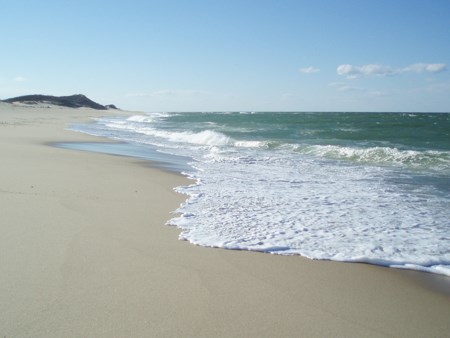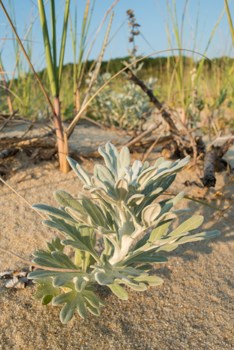
NPS Photo The Beach …..More than just sand Most visitors will agree that Cape Cod National Seashore has some of the most beautiful sandy beaches on the east coast. Visitors are drawn to the many recreational opportunities the beach has to offer, such as walking, swimming and relaxing under an umbrella on a hot summer day. What many people may not be aware of is that these beaches are important ecosystems that support a wide variety of plants and animals, many of which blend in with the environment and are often overlooked. Some of these species are wide ranging, and include the beach as one of many habitats they use. But others depend exclusively on beaches for their survival. The inhabitants of the beach are linked by their intimate relationship with the ocean's waves and tides. Very small nematodes (simple worms), copepods (tiny crustaceans), and other invertebrates live in the space between sand grains of the lower intertidal zone. Sand-dwelling organisms in mid-and upper-tidal areas are adapted to cope with shorter periods of inundation by sea water. Some may resist desiccation by sealing up a tough outer shell or carapace like a clam; others avoid exposure by burrowing down to wet sand until the tide returns. Above the tide line, the beach is a transition zone from marine to terrestrial systems, powered in large part by the energy contained in "wrack". Wrack is a mix of marine plants ("seaweed") and salt marsh plants ("thatch"), deposited on the beach by high tides, especially those associated with full and new moons. Wrack supports numerous species of invertebrates. Amphipods and fly larva shred the "wrack" and piping plover chicks learn to dart along the wrack line feeding on flies and beetles. Like the surf-casters that reel in stripers - all these Cape Codders are getting nutrition and energy from the ocean. Wrack also plays an important role in the maintenance and growth of the beach and dunes. Along with natural driftwood, wrack traps wind-blown sand. Because wrack often contains root fragments of American beachgrass, this mix of wrack and sand often forms "embryonic dunes", which can lead to the establishment of larger, more permanent dunes. 
Photo by Naomi Blinick |
Last updated: February 26, 2015
